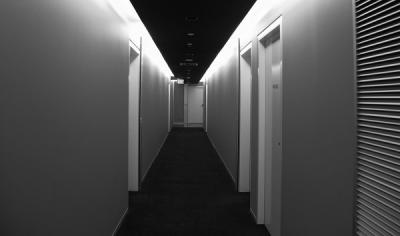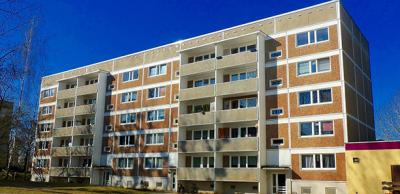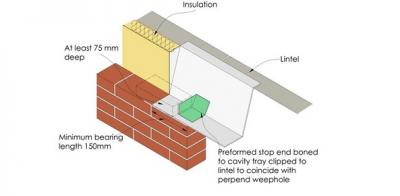The dos and don'ts of mains powered smoke alarms and battery alarms
Most properties in the UK have battery-operated smoke alarms, but mains powered smoke alarms interlinked between floors are the most reliable method of giving early warning in case of fire and must now be installed in all new homes.
Mains-wired smoke alarms are also required in certain types of alteration and extension work. Mount them in the circulation space at every floor level:
- In loft conversions
- When adding new habitable rooms (bedrooms, kitchens, living or dining rooms) above ground floor level
- When adding a new habitable room at ground floor level that doesn’t have its own exit leading outdoors
Installing new interlinked smoke alarms can be disruptive, so think about the need for detection before you start work. Radio-linked alarms are acceptable; as long as the manufacturer can guarantee the battery back-up will last for 72 hours.
Smoke alarm DOs:
- Ensure there's at least one alarm on every storey of the dwelling
- Ensure there's an alarm within 3m of the door to every bedroom.
- Provide a heat detector to the kitchen if it's open plan to the escape route
- Mount them 300mm away from walls and light fittings
- Ensure the electrical installation of the units meets Part P requirements in England and Wales
- Provide instructions to the end user
Smoke alarm DON'Ts:
- Install them above staircases where testing and maintenance is dangerous
- Site them in places where they can become very hot, cold, or subject to a lot of moisture or fumes (bathrooms, kitchens, garages - use a heat detector if need be)
Remember, there are additional requirements for large houses of two or more storeys where one of those storeys exceeds 200m2, so bear this in mind when working on footballers' mansions! If in any doubt, contact your local authority building control team to discuss.
Further information about fire safety
- View a diagram showing where to place smoke alarms and heat alarms
- Download the SCA Guidance on Smoke Control to Common Escape Routes in Apartment Buildings (Flats and Maisonettes)
- Read the Building Regulations Part B Approved Document on Fire Safety for dwellings in England and Wales
Also view: How to protect residents from carbon monoxide poisoning
Please Note: Every care was taken to ensure the information was correct at the time of publication. Any written guidance provided does not replace the user’s professional judgement. It is the responsibility of the dutyholder or person carrying out the work to ensure compliance with relevant building regulations or applicable technical standards.
This article was updated on August 2024
Sign up to the building bulletin newsletter
Over 48,000 construction professionals have already signed up for the LABC Building Bulletin.
Join them and receive useful tips, practical technical information and industry news by email once every 6 weeks.
Subscribe to the Building Bulletin





Comments
Loft space
Submitted 6 years 6 months ago
Insulation location
Submitted 6 years 6 months ago
Multiple ownership
Submitted 6 years 6 months ago
Would not trust any of the so called experts until they put up some assurance , ie if ex fire officers wish to be seen as the compidient experts lets see their pension funds cover their risk assessments. Ian Malone
Question
Submitted 6 years 6 months ago
Reply
Submitted 6 years 6 months ago
Generally smoke detectors aren't positioned in the common hallway/stairs in flats as they're often disabled due to false alarms.
Thanks,
John Allen
Cables
Submitted 6 years 6 months ago
(No subject)
Submitted 6 years 6 months ago
Thanks for your comment. You'll find guidance about power supplies in sections 1.19 to 1.22 in Approved Document B Volume 1 if it's in a house (here's the link https://www.labc.co.uk/sites/default/files/EXT.Approved-Document-B-Fire-Safety-Vol1-Dwellinghouses-ENG-2013.JMCN_.v1.200417.pdf)
Or if it's in a flat, in Volume 2 (here's the link https://www.labc.co.uk/sites/default/files/EXT.Approved-Document-B-Fire-Safety-Vol2-Buildings-Other-ENG-2013.JMCN_.v1.200417.pdf)
Many thanks,
John Allen, LABC
smoke detectors
Submitted 5 years 5 months ago
until this has been rectified i would suggest that you use the earth of the 2 core cable installed as the interlink for your own safety. smoke detectors are plastic so dont require earthing but obviously you then have a cable with no cpc.....
get it sorted out mate
Webmaster note
Submitted 6 years 6 months ago
Mains wired smoke alarms
Submitted 6 years 5 months ago
Ychwanegu sylw newydd